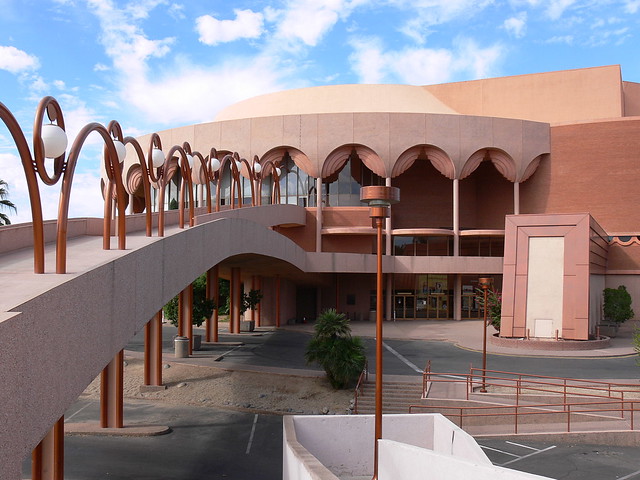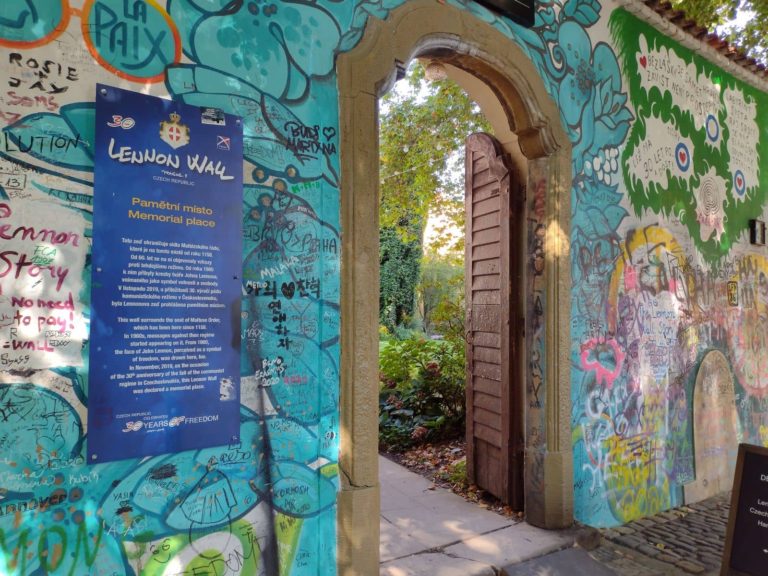Amongst the forested hills and deep river valleys, in the heart of central Bosnia & Herzegovina, the walled city of Jajce stands out as one of the prettiest places in the country. At its base, a grandiose waterfall plunges into crisp blue-green pools.
Often seen as a stopover between Sarajevo and Banja Luka, a place to break bread and explore for the afternoon, the medieval town is much more than that when you peel back its layers.
On my second trip to Bosnia & Herzegovina, I vowed to explore some sights off the typical backpacking route. This eventually brought me to Jajce – the waterfall town.
In this article, I compile a list of my experiences that can be used as a short guide to Jajce. Plus I share some tips on where to stay, how to get the most out of a trip to Pliva Lakes and Pliva Waterfall, and a few other can’t-miss sights.
Here are 11 wonderful things to do in Jajce, Bosnia & Herzegovina.
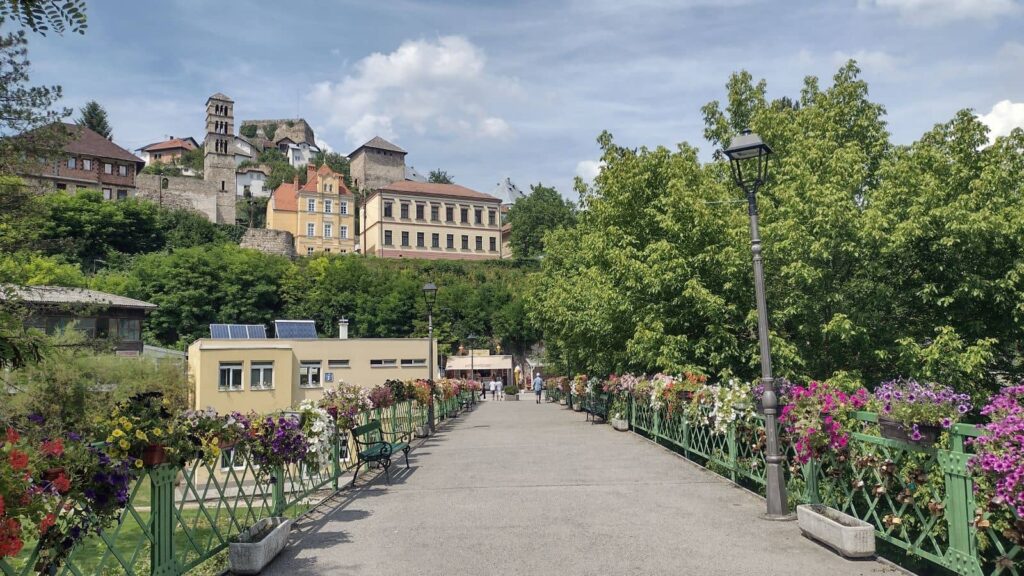
ADMIRE PLIVA WATERFALL
The Pliva Waterfall is a towering cascade that pours forth from a tranquil, slow-flowing river underneath the walled city of Jajce. With vibrant blue-green pools and a mist-filled observation deck, it’s the top reason people visit the historic Bosnian town.
I rank it as one of the coolest waterfalls I’ve ever seen, not just for its beauty, but also for its fairytale-like setting. Located at the connecting point of the Pliva and Vrbas rivers, it dominates all views coming into town.
Entry | To access the large platform that caresses the bottom pool of the waterfall you’ll need to pay an entrance fee of 10 KM.
While the pictures are great from here, there are better free alternatives for viewing in my opinion. A few steps from the bus terminal, next to the gas station, there is a row of half-circle viewing decks with aerial panoramas of the waterfall. You’ll also find spectacular visibility from the hill across the valley if you’re willing to walk a little bit.
If you’re visiting in August, keep your eyes out for the yearly cliff-diving competition at Pliva Waterfall. Jumpers from around the world leap off a 19-meter platform that hangs above the top of the cascades. Those of you familiar with the Mostar bridge divers might find this to be an equally exciting spectacle.
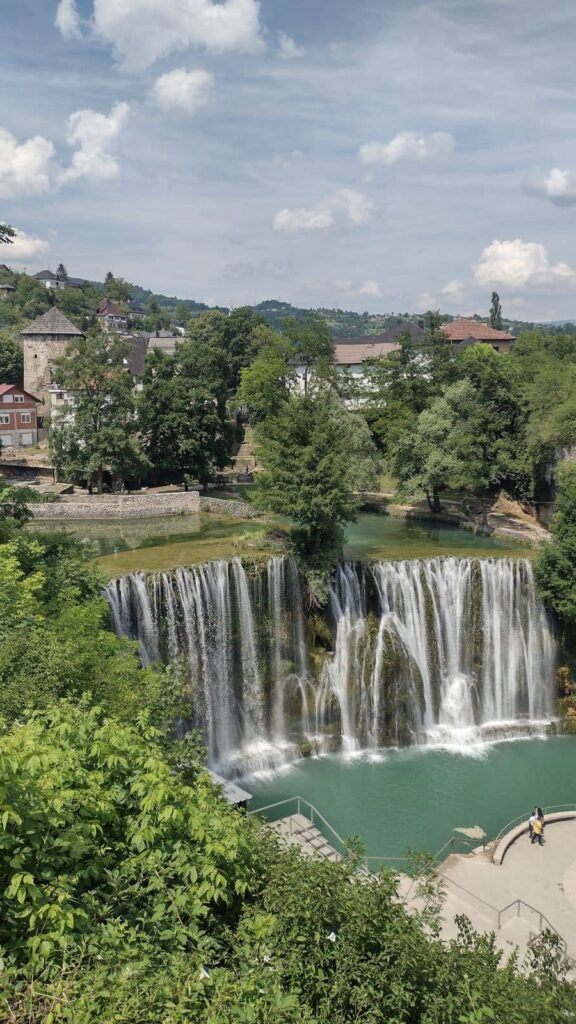
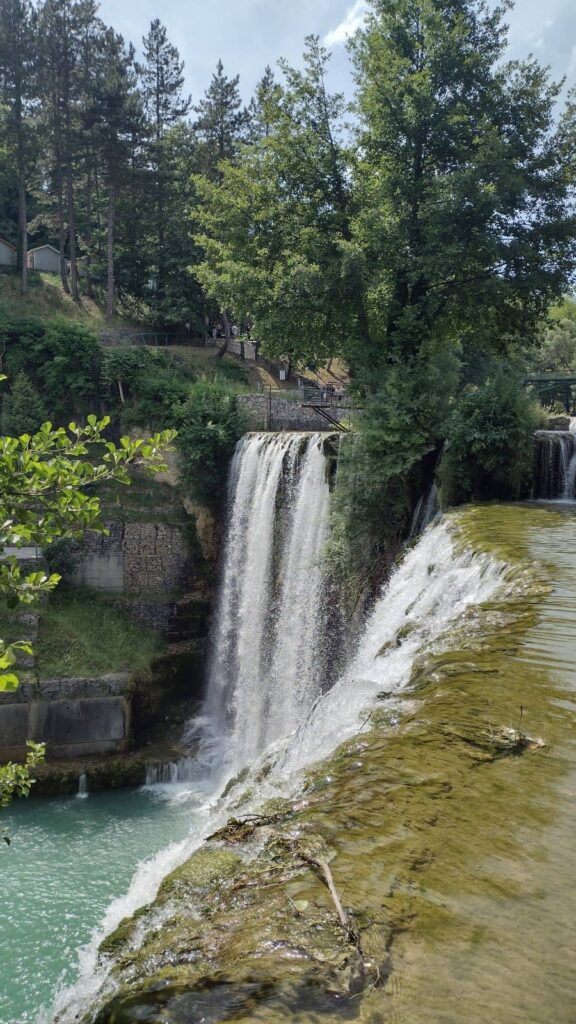
THE VIEWS FROM JAJCE FORTRESS
Perched above the walled city, the Jajce Fortress offers a bird’s-eye view of the city and its natural surroundings.
It’s a smaller, well-preserved castle with a grassy courtyard and little else within the interior walls. Besides a few dilapidated buildings, the yard is home to a wooden pillory and a lone bench underneath a shady tree.
Don’t let this discourage you though, it’s still a pretty fortress, and in all likelihood, you’ll have it to yourself. Plus, the main reason to trek up is for the almost 360-degree panoramic views from the walkable walls.
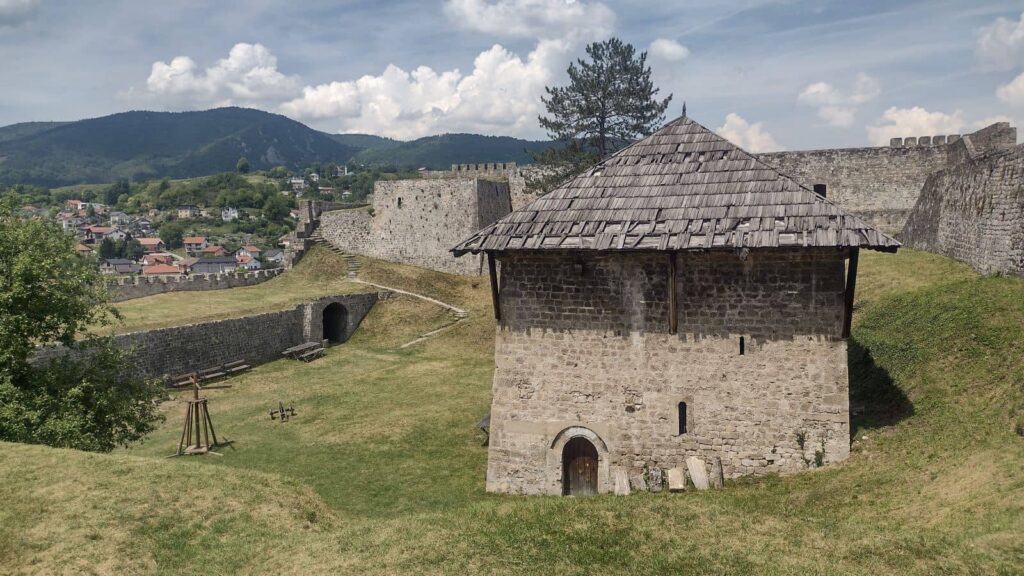
Travel Tip | It’s worth noting that there is little information about the Jajce Fortress on site, so looking up a bit of its history online before visiting can really enhance your experience. After all, the stronghold was at the heart of Jajce when it was a former royal capital.
Entrance into the inner castle can be accessed through the castle gate at the Great Southern Bastion. You must pay a 5 KM fee at the kiosk just beside it to enter.
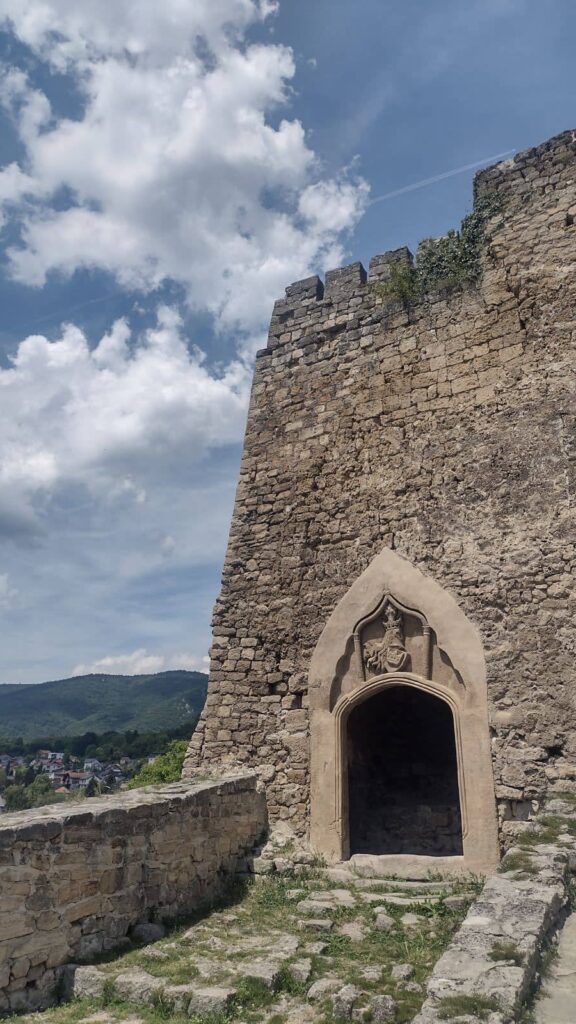
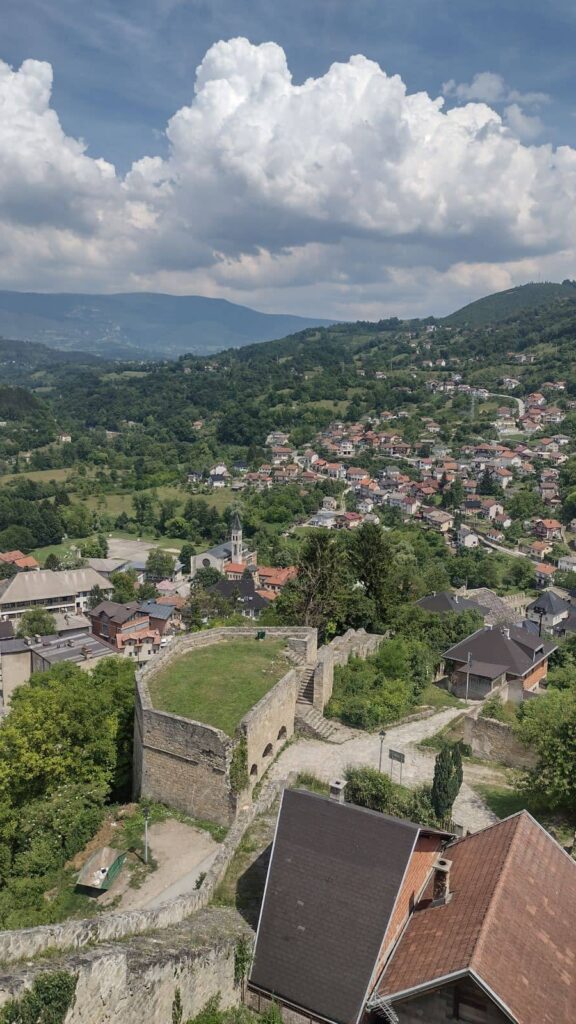
THE REST OF THE CASTLE COMPLEX
Jajce Fortress is more than just its inner castle, there are plenty of other features worth seeing on the journey up. Unlike the stronghold, these other sights are accompanied by informational signs, giving a brief look into Jajce’s story
Bear Tower | The large, rounded tower is the entry point for those entering the fortress from the west.
The Jajce Catacombs | Dimly lit and cool upon entering, the underground burial chamber dates back to medieval times. Tickets cost 5 KM and are available at the adjacent booth.
St. Mary’s Church and St. Luke’s Bell Tower | The church is little more than a structural frame, but is still the most eye-catching building in the castle complex. It dates back to medieval times when it was built in the Romanesque style, before being reconstructed as a Gothic church. The best view of it is from the cobblestone steps leading up the hill opposite.
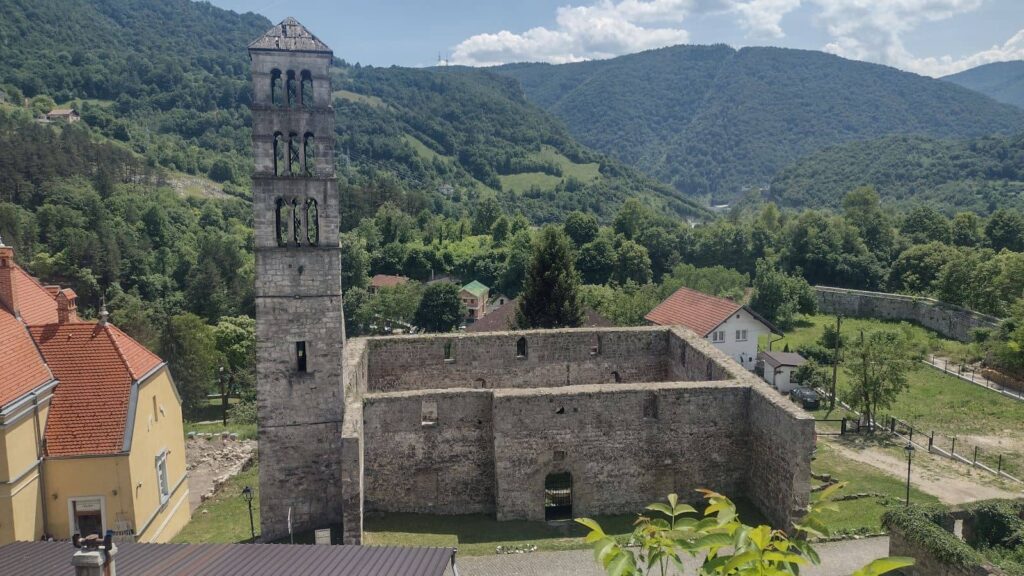
The Burić House | A 17th-century house that was eventually destroyed during the Bosnian War. It’s believed that Josip Broz Tito stayed here back in the early 1940s.
Dizdar Mosque | It’s a small mosque without a minaret or rounded roof, making it look more like a house. The building was reconstructed in 2002 after weathering and destruction from the war.
The Ethnographic Museum | An ensemble of articles from different eras make up most of the museum. You’ll find a few small exhibits that share collections of old textiles, a living room set-up, and a radio display.
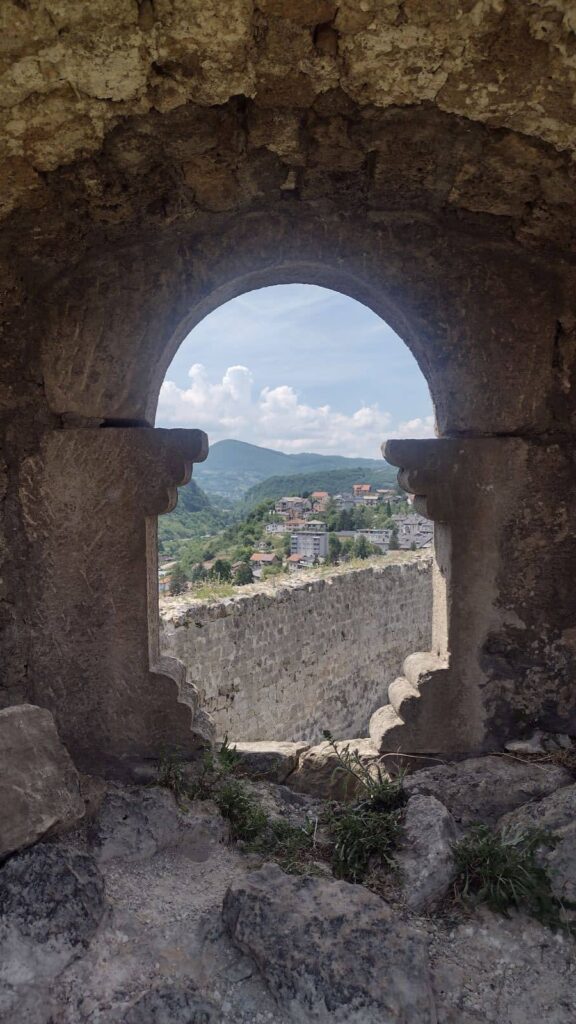
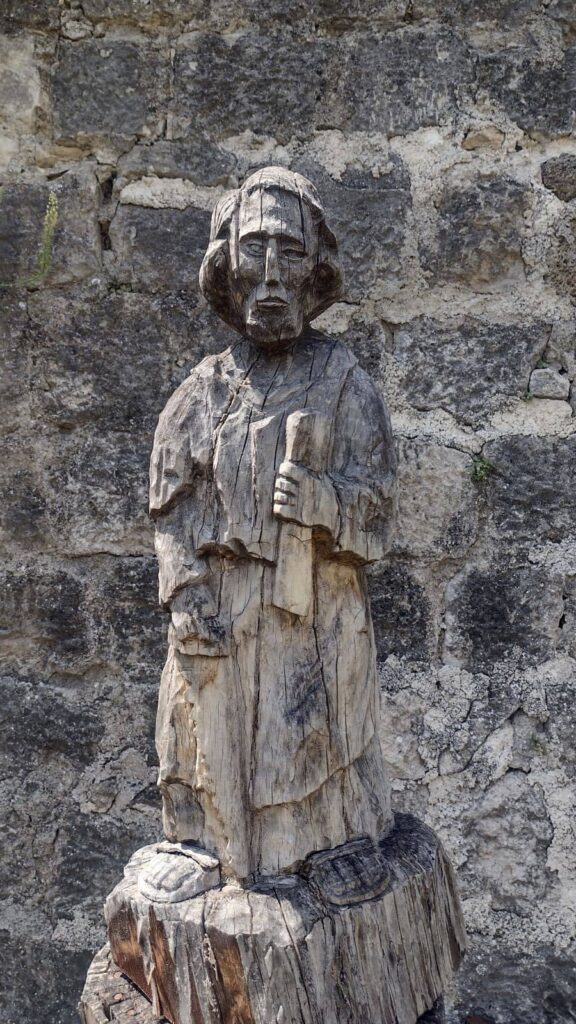
HAVE A STROLL BY THE RIVER
The Pliva River around Jajce is a succession of organized waterfalls that finally end with the Pliva Waterfall. Alongside it is Gradski Park with its pristinely cut grass and naturally shaded seating areas.
This whole area has walking paths running through it, passing colorful flowerbeds and historical artifacts such as heaping stone tombs. It makes for the perfect midday stroll, with an open lawn and plenty of benches by the river’s edge.
If you’re feeling up for it, grab some items at Crvena Jabuka Market for a relaxing picnic below the Iron Bridge. At the eastern end of the park, near the zipline, you’ll find a viewing platform that allows you to look over the edge of the vertigo-inducing waterfall.

WANDER THE OLD TOWN
The Jajce Old Town is a wonderful jumble of wooden shops and sloping streets within the massive stone walls. Most of the hype goes to the waterfall and hilltop castle complex, but the historic old town is a fun place to explore too.
Here are some structures worth looking out for:
The Travnik Gate and Banja Luka Gate | These two gates are the entry points into the older part of the city. The Banja Luka Gate is at the northern end and you’ll most likely cross through it if you stay in the residential area outside the center. The Travnik Gate will be the first entry point for most of you, especially if you’re crossing the ‘Eiffel Bridge’ to get to town from the bus station.
Temple of Mithras | A few ruins that were once a temple in the early early centuries. You can see it through a glass barricade, but for those wanting a close-up look, it has a small entry fee.
Čaršija Mosque | Considered to be the first of Jajce’s mosques, it was destroyed during the war and reconstructed in the early 2000s. It’s a beautiful structure by the fountain in the old town and also goes by the name of Esma Sultanija, the wife of a former Bosnian governor.
Museums | There are two museums of note in Jajce, besides the aforementioned Ethnographic Museum. One is the small Franciscan Museum that houses some interesting religious artifacts and the other is the Museum of the 2nd AVNOJ. The latter gives some interesting insight into WWII and the birth of Yugoslavia.
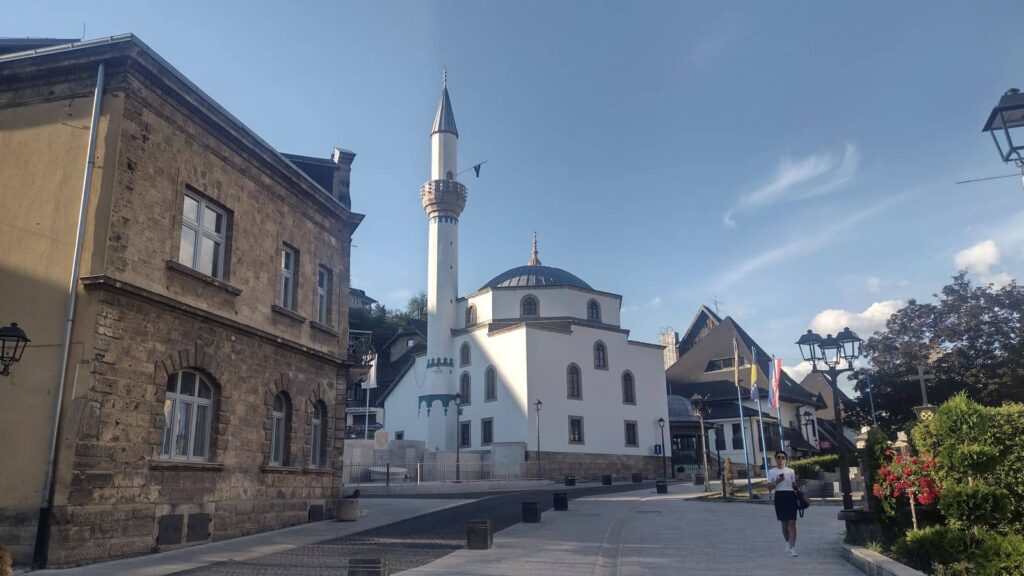
HAVE A BITE TO EAT IN THE CENTER
Jajce is a smaller place; its town center is no more than a few blocks in total, so you won’t find a wide range of food options. However, that doesn’t mean there aren’t some stellar bites to be had. Expect a heavy dose of traditional Bosnian fare, with a few scattered alternatives as well. Here are some of my favorites:
Cevabdzinica Dedo | A wonderful restaurant with a menu that revolves around ćevapi. The food is simple but tasty, and the staff is friendly. Make sure to sit along the edge of the patio for spectacular views of the river below.
Bedem | The go-to spot for burek in town. They keep the ovens churning throughout the day, so you’ll get a fresh pie at most hours of the day. Prices are per kilogram, so don’t overdo it when you order!
Kinder Palačinkarnica | If you have a sweet tooth, look no further. This place is all about the pancakes and coffee. They have some unique desserts, like a Kinder ice cream crepe and a Snickers pancake.
Restoran Stari Grad | An excellent eatery with a wide range of traditional dishes. A part of the floor inside is made of glass and shows the remnants of an old stone wall.
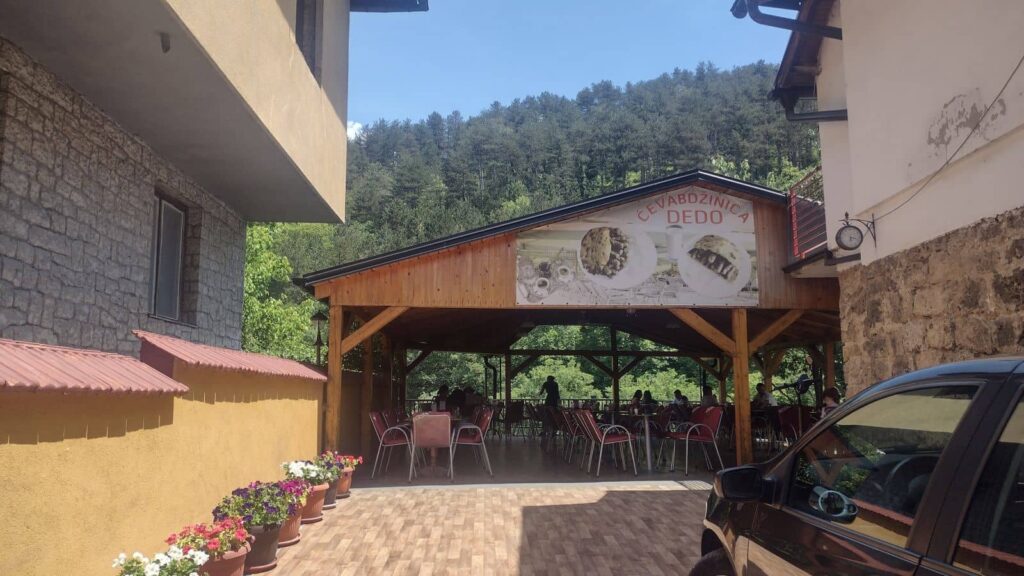
TAKE A DIP IN PLIVA LAKES
Two lakes form in the middle of the Pliva River a bit upstream from the Pliva Waterfall. They’re known as Veliko Plivsko and Malo Plivsko or Big and Little Pliva Lake.
Picture reflective water amongst dolomite and limestone, with natural dams of travertine similar to Croatia’s Plitvice Lakes. While the scale isn’t quite as epic, the Pliva Lakes are still a stunning sight to behold.
Due to their closeness to Jajce, many areas of the lakes are used by locals and travelers alike as a means to cool off in the summer. One area in particular stands out as the ideal swimming spot – the Jajce Dam Swimming Pool (maps). The sequence of natural pools, shaded by trees, appear below the Bridge of Love, where the small lake narrows down.
Alongside the water, you’ll find what is seen on maps as Beach Vapore, an open park with picnic tables, a volleyball net, and a small cafe. This area has metered parking spots available at a reasonable price but is also within walking distance of Jajce.
If swimming isn’t on the agenda but you’re keen to get on the lake, you’ll find kayak rentals at a few places en route from the bridge down towards the big lake.
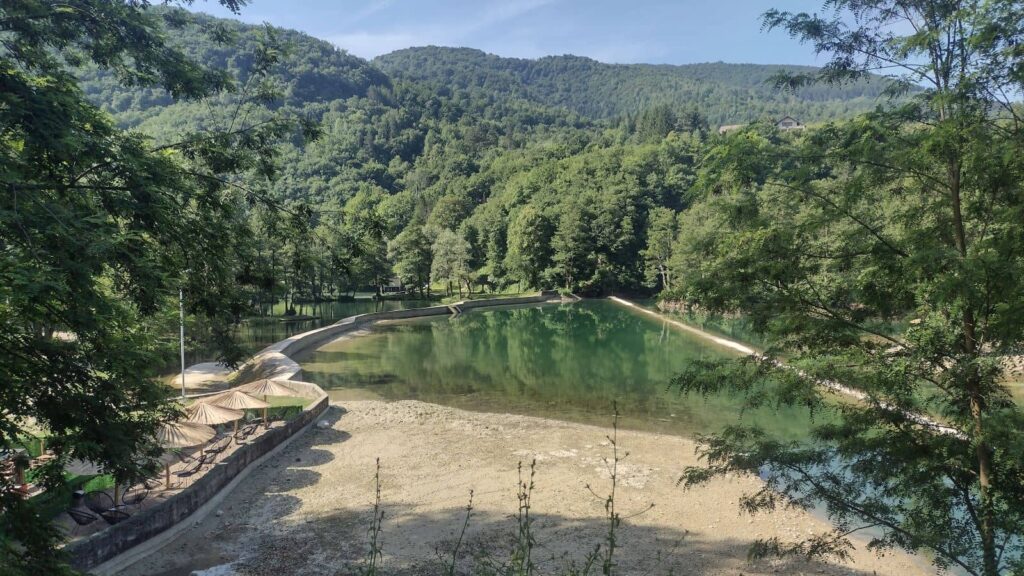
VISIT THE JAJCE WATERMILLS
Besides viewing the waterfall, this was one of my must-do things in Jajce.
A cluster of wooden mills sits at the edge of Malo Plivsko about 5 km (maps) to the east of Jajce town center. These little structures were built well before the idea for the hydroelectric power station was put in place, back in the early days of the Austro-Hungarian Empire.
Once used as watermills by local farmers, they now serve as a cultural monument of sorts in the region. One of them is still being used as a model, and all of its parts are intact. The reconstructed stilted “gnome homes” can be seen up close and personal, with a wooden walkway connecting each one.
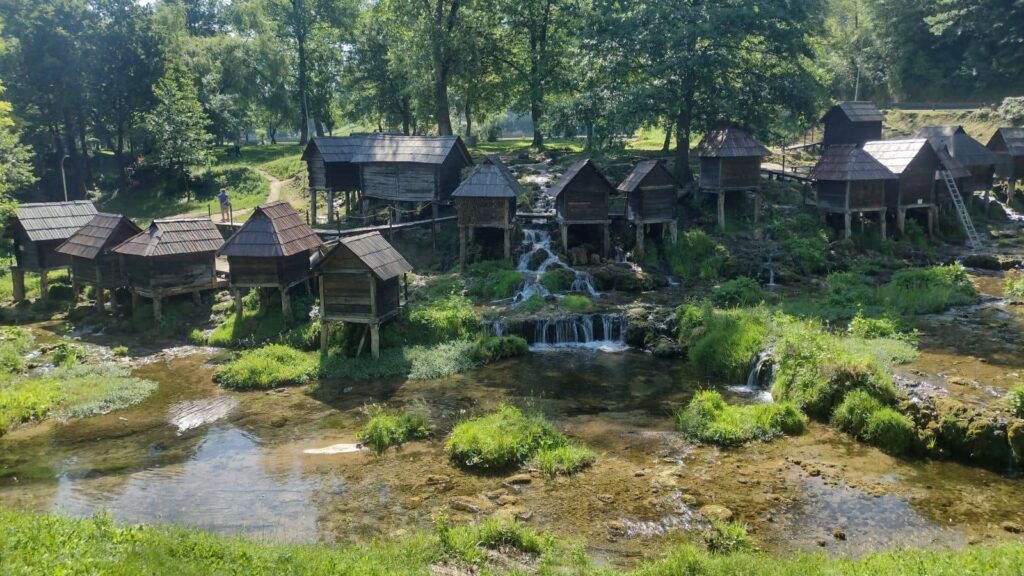
They weren’t always like this, some years ago they were transported from different parts of the river and placed together in Pliva Lake Park to form the open-air museum you see today.
Getting There | You can get to the Jajce Watermills by either walking from town or taking a taxi. I did the former and would suggest it if the weather allows for it. While I noticed a small bus stop nearby, I never once saw any form of public transport in Jajce. It was May when I visited, so maybe in the summer that changes. If so, you’ll have to let me know!
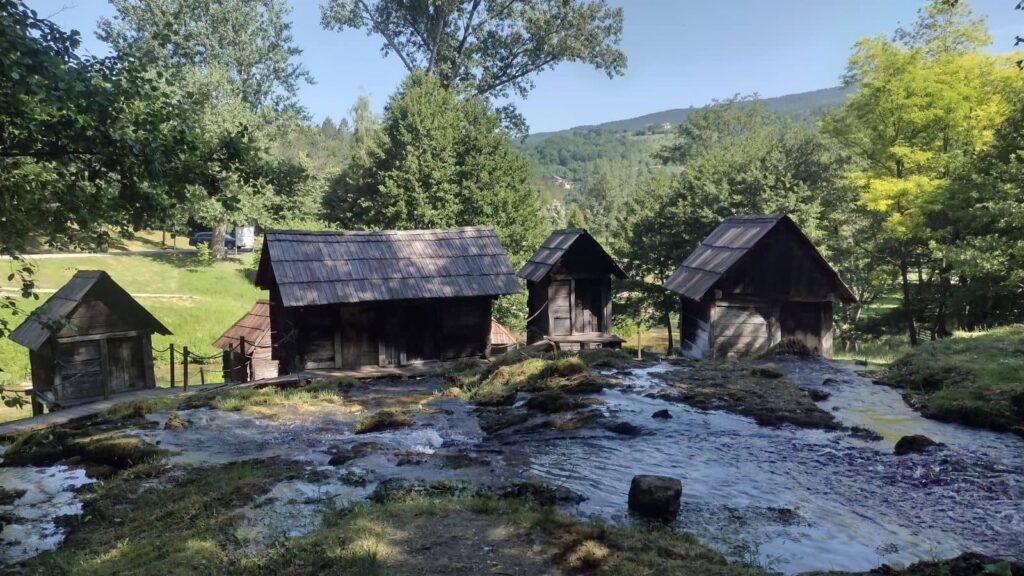
WALK THE BRIDGE OF LOVE
The Bridge of Love (maps) is a long, curving wooden walkway that crosses the small lake. Located directly after the swimming dam, it’s a unique way to traverse the water above a series of small cascades.
The pathway itself weaves through dozens of trees that give it natural shade from the sun above. Make sure to watch your step, despite its sturdy feel, there are still a few loose planks you’ll walk over. Below them are a heap of algae, moss, and bacteria that grow at a rate of 1 centimeter per year and form natural barriers in the lake.
At the northern end of the bridge, you’ll find a small cafe with a wooden seating deck. You can order a drink and sit on one of the swinging seats as you take in the gorgeous views.
This part of the lake is extremely photogenic, so if you’re looking for some pretty snapshots, look no further. It’s also a natural stopping point between Jajce and the watermills.
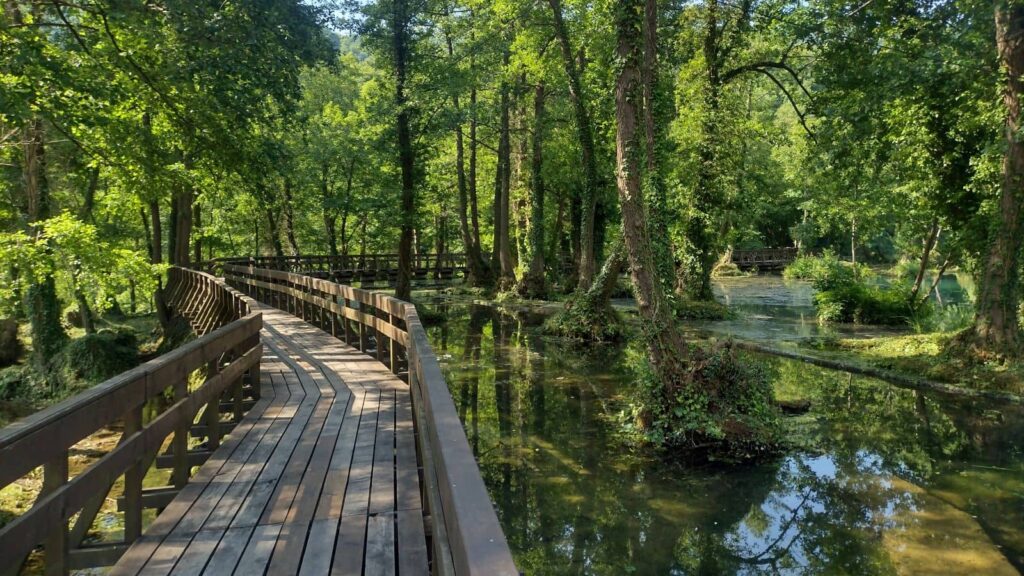
LOOP AROUND THE LAKE
I found the best way to see all the lakeside highlights was by doing a looped trek around the smaller of the two Pliva Lakes. The journey itself is between ten and twelve kilometers from Jajce to the watermills and back.
You can cross the lake by the mills on a small bridge by the hydro plant to reach the other side before recrossing again at the Bridge of Love to avoid walking along the highway. Here are a few of the notable stops on the loop:
- The first few kilometers of the trek along the north side of the river there isn’t much to see besides houses. However, just past them, there’s a restaurant called Konoba Slapovi (Waterfalls Tavern) which is worth a look. The food is decent here and the views even better, with half the property sitting along the river next to a wide, eye-catching waterfall.
- After this, you’ll come to the previously mentioned swimming dam and the Bridge of Love. It’s worth spending some time in these places for a cool down and/or a snack. The park next to the pools is also an ideal spot for a picnic.
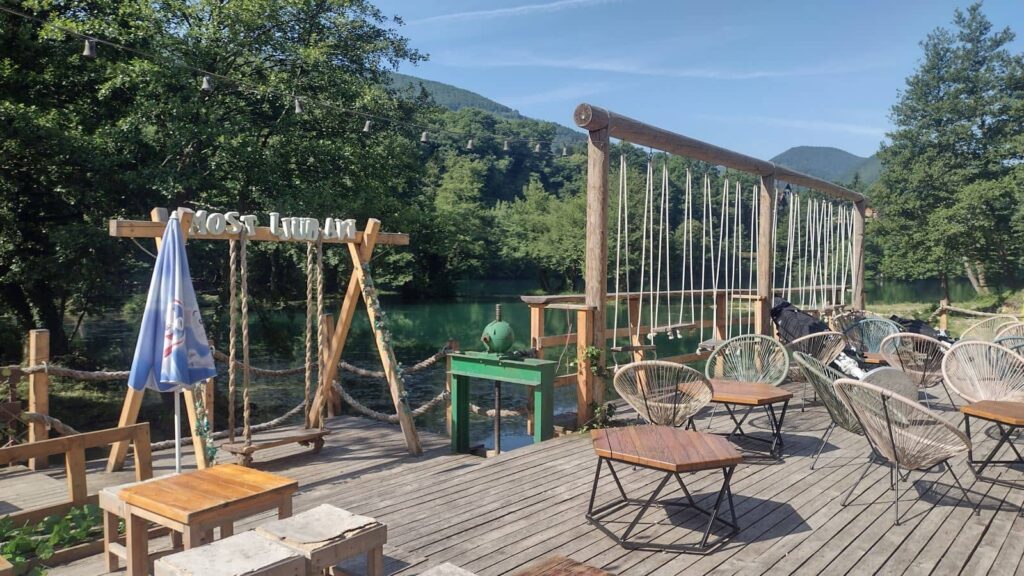
- The route from the bridge to Pliva Lake Park follows a lakefront wood promenade that offers fantastic perspective of the lake. Once at the park, you’ll find a couple of small cafes, family play areas, and of course, the Pliva Watermills.
- On the opposite side of the lake between the plant and the bridge, you’ll get the chance to pass through a series of small tunnels meant for cars and foot passengers. They give this part of the walk an adventurous feel.
Give yourself at least a half-day to complete this route with brief stops at each of the places I mentioned. If you go for a meal or spend time at the swimming hole plan for a full-day excursion of the Pliva Lakes!
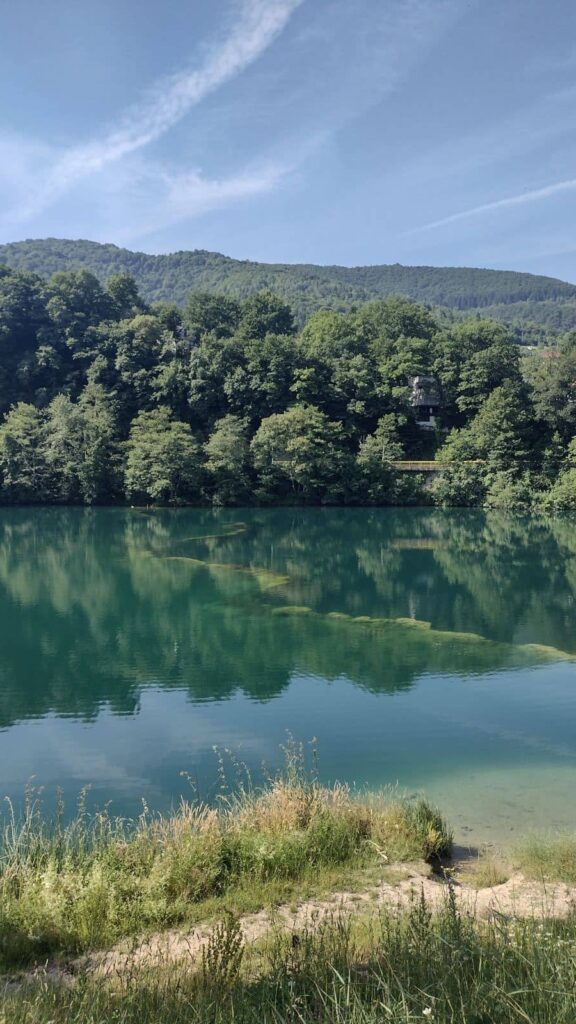
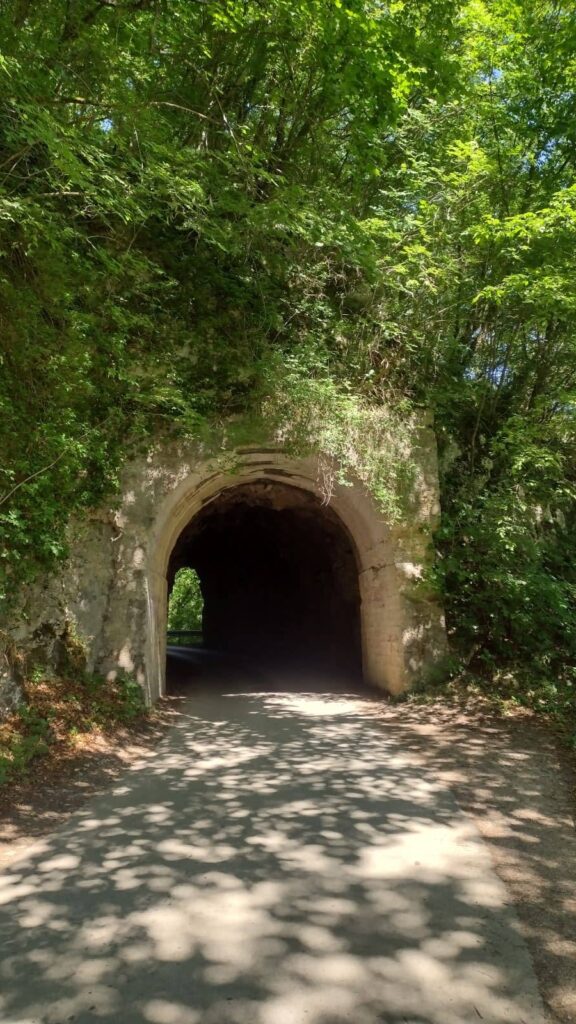
HEAD OUT FOR A DAY TRIP
Jajce is in a well-situated spot in the center of Bosnia & Herzegovina, especially for those of you looking for a more laid-back town to base yourself in. There are a couple of great day-trip options positioned along the country’s ‘backpacking route’ within a couple of hours of the town.
Travnik | A small city and former capital along the road from Jajce to Sarajevo. There are numerous beautiful mosques here, including the extraordinary Ornamented Mosque. Some other points of interest are the city’s hilltop castle, a museum dedicated to renowned author Ivo Andrić, and the relaxing Plova Voda. Oh, and it’s known as the home of Bosnia’s best ćevapi!
For more details check out my ‘Best Things to do in Travnik’ article.
Banja Luka | The country’s third-largest city and designated capital of the Republika Srpska. Some places worth visiting here are the elegant Ferhadija Mosque, the expansive riverside castle, and the impressive downtown cathedral. You’ll find some great street art here too, along with a pair of interesting museums. It’s also one of the few places in the country to find good international food.
For more details check out my ‘Guide to Banja Luka’ article (coming soon).
Both these spots are within a couple of hours of Jajce, and although I think they deserve a couple nights stay each, can be done in a single day. They are both easily accessible by bus.
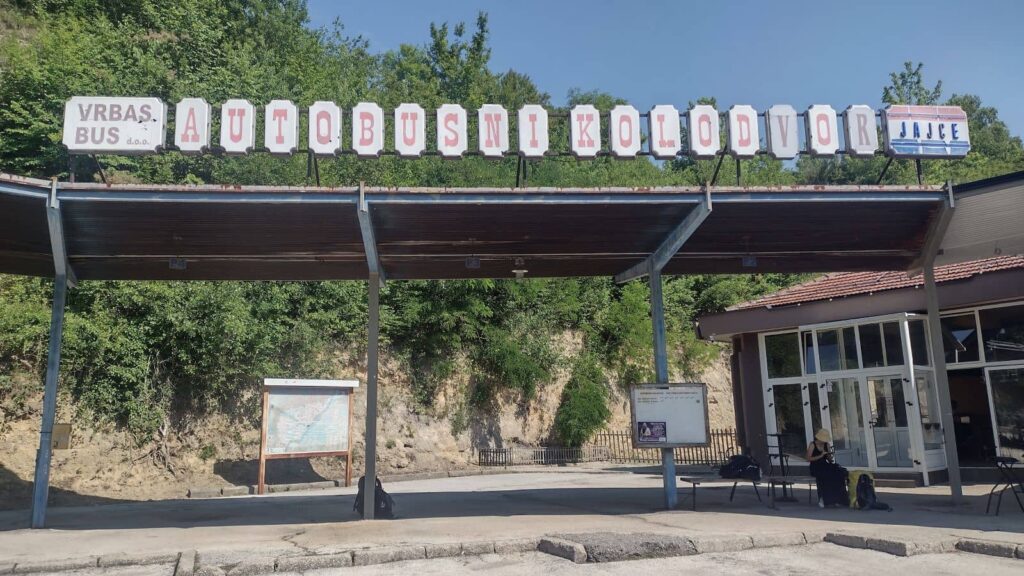
GETTING AROUND JAJCE
Jajce is a compact, easy-to-walk city with pretty much everything accessible by foot. If the hills are giving you a rough time there are plenty of taxis about as an alternative.
Keep in mind that there’s no public transport in and around town. That includes trips to the nearby Pliva Lakes. For intercity travel, however, the Jajce Bus Terminal (maps) has plenty of routes heading to nearby cities like Travnik, Banja Luka, and Sarajevo.
Along with a few local bus companies, FlixBus has routes that cross through Jajce. These usually run through the company Globtour Međugorje, so don’t expect the typical green buses.
As with most places around the Balkans, you’re expected to pay a small fee for a carriage that goes in the underneath compartment.
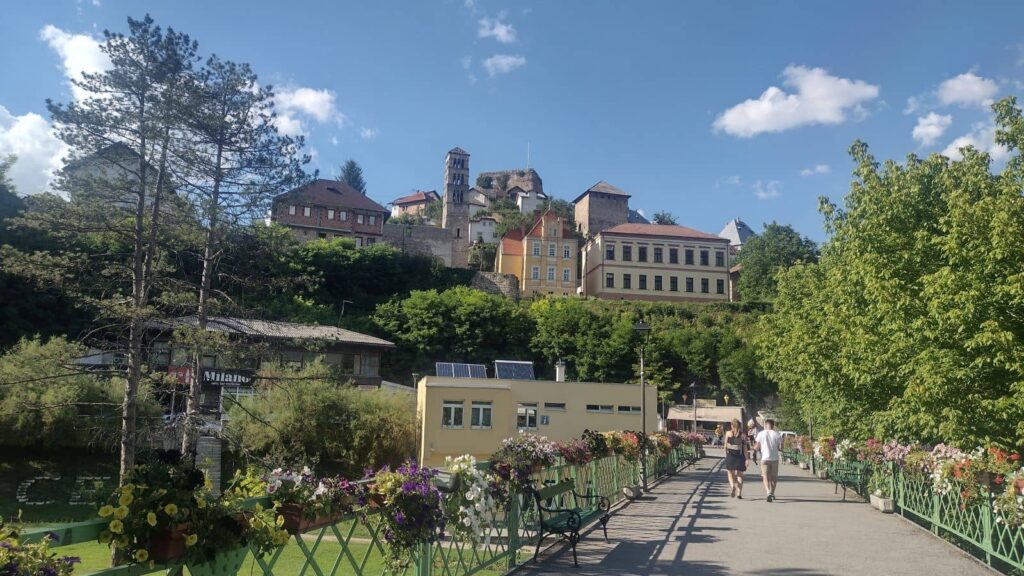
WHERE TO STAY IN JAJCE
Jajce is a hilltop town that revolves around its iconic waterfall, walled town, and nearby lake. Most accommodation options will be either family-run guesthouses or private apartments. Although, campsites and vacation rentals are popular options along Plivsko Lake. Here are some places worth staying in Jajce:
- Konoba Slapovi & Villa Pliva Lake | A budget-friendly option by the lake and a private lakeside apartment.
- Damade Apartmens & Apartmani Waterfall / Vodopad | Two mid-price apartments in the old town.
- Villa Jajce | An apartment option close to the grocery store and old town.
For more options check here.








